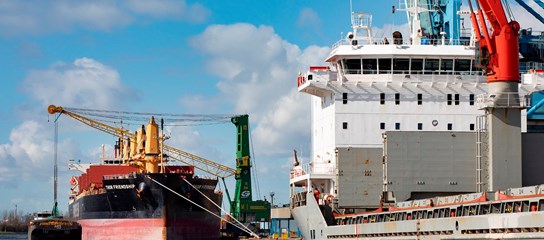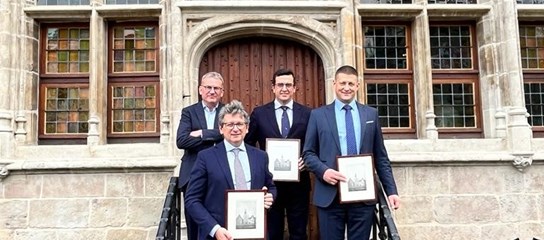Maritime access in North Sea Port extended: OVET now able to accommodate ships with deeper draughts in Vlissingen
Previously, ships with draughts of up to 16.70 metres could dock at OVET's dry bulk terminal in Vlissingen. But from now on, a vessel with 10 cm more draft, i.e. 16.80 metres, can enter the port. This means that a Capesize ship, which previously could discharge at about 155,000 tons, can now carry up to 3% more cargo such as coal and iron ore on board. OVET receives about a dozen Capesize ships every year, carrying cargo worth as much as $30 million. So the difference is expressed not only in tons but also in cents.
More realistic picture of draught
The Joint Nautical Authority has facilitated this increase in capacity by taking a different and more realistic approach to calculating the maximum permitted draught through the Wielingen channel in the Westerschelde. Besides additional vessel stability data, tides and the influence of wind, swell and wave action on the vessel have been taken into account. This allows a realistic figure for draught to be determined even more precisely and means no additional dredging of the channel is required.
Deepwater ports
This is good news for shipping companies looking for ports for their Capesize ships. Vessels of this type could already enter Vlissingen as well as the classic deepwater ports, but from now on these ships can call at Vlissingen in North Sea Port with increased draught. As a result, North Sea Port has extended its maritime access in Vlissingen. After the opening of the New Lock in Terneuzen, larger ships will also be able to serve companies located in Terneuzen and Ghent. Which is good for a more efficient supply of businesses.
About OVET
OVET dry bulk terminal is a transhipment company specialising in the storage, transhipment and handling of dry bulk goods such as coal, (pet)coke, anthracite, minerals, agribulk, biomass, rockfill for offshore wind farms and scrap metal. The company was founded in 1957 and has over 100 employees at its terminals in Vlissingen and Terneuzen. With 4 floating cranes, it has a maximum total discharge capacity of 80,000 tons per day.




